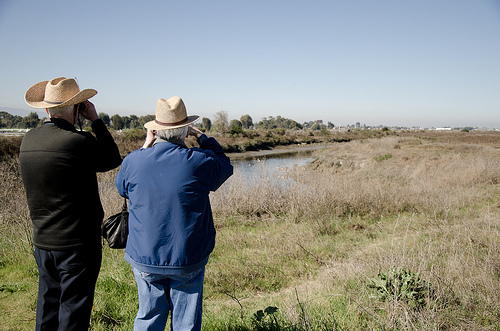With Americans having fewer babies and fewer immigrants arriving since the 2009 recession, education institutions had better brace for change, a new study finds. The number of high school graduates dipped in 2012 for the first time in decades, and it is likely to stay down until 2019, according to a new report by the Western Interstate Commission for Higher Education (WICHE). The commission projects a slow growth in graduates after 2019, due largely to immigration, and nothing like the past several decades of 8 to 10 percent increases each year.
This means education institutions will have to do two major things, said Brian Prescott, WICHE’s director of policy research: Stop expecting strong demand and figure how to improve retention and achievement for current-minority populations.
“The reality facing colleges and universities and the policy structures supporting them will be different in the next decade or so,” Prescott said. “The other side of the story is diversification. We’re seeing a real loss in white, non-Hispanics graduating from high school; almost a one-to-one replacement of those non-Hispanics with Hispanics.”
Losing Population
The number of white students graduating high school is projected to drop 13 percent between the 2008-2009 school year and 2024-2025. That presents challenges for teachers and institutions, as minorities currently have far higher dropout rates and far lower achievement rates. Northeastern states will be particularly challenged as they lose population to southern states, the report says.
The changing population means colleges must decide whether scarce dollars should go toward recruitment or maintaining the current student body, Prescott said.
Higher education will be further challenged by demographics, the economy, and decreasing interest among young people in college as its benefits decline, said demographer Joel Kotkin.
Fewer kids also mean less need for professors, teachers, administrators, and support staff. Education is one of the economy’s highest-employment fields. Accelerating the crunch on employment is a slow transition to having technology spread the reach of fewer, better teachers.
“People may just not have the money to spend, or they may go to a different kind of education [institution],” Kotkin said.
Higher Education Expense
Public spending increasingly limited by healthcare and pension costs for an aging populace, combined with mounds of public debt soon due, will continue to plague education institutions and students.
“College is the second-most expensive thing people tend to buy” after a house, Prescott said. Recently, he said, states have reduced their higher education subsidies, meaning students have to pay more of the price immediately rather than later in taxes.
Many students attend college who don’t need to, Kotkin notes. Increasingly, college-educated people are working at jobs that don’t require a college degree—fully half of all recent college graduates.
“If we are allowed to build housing to match the population, there will be a lot more opportunities for plumbers, mechanics, and those kinds of workers,” Kotkin said.
Lower payoffs for college degrees may also lead more high school graduates to choose something else. During the recent recession, community college enrollment “saw a huge increase,” Prescott said.
Demographic Effects of Economy
Posing an important question to demographers is the possibility of falling Latino birth rates, says Nicholas Eberstadt, an American Enterprise Institute economist and demographer.
Right now, Latinos are propping up the U.S. birth rate to just below replacement, at 1.9 children per woman. As they move to the United States, however, immigrants tend to shift their childbearing to lower U.S. levels. If that happens with Latinos, the U.S. birth rate will drop even farther and faster than expected.
Birth and immigration rates have taken a hit since the 2009 recession, and the economy has still not recovered, Eberstadt said.
“Both the drop in births and the drop in immigration might be explained as a reflection of a bad economy,” he said. “If you believed that, you might think that when economic outlook picks up, immigration and birth will pick up.”
Learn more:
“Knocking at the College Door: Projections of High School Graduates,” Western Interstate Commission for Higher Education, December 2012: http://www.wiche.edu/pub/16556.
“America’s Baby Bust,” Jonathan Last, Wall Street Journal, February 2, 2013: http://online.wsj.com/article/SB10001424127887323375204578270053387770718.html.
Image by Jared Wong.




